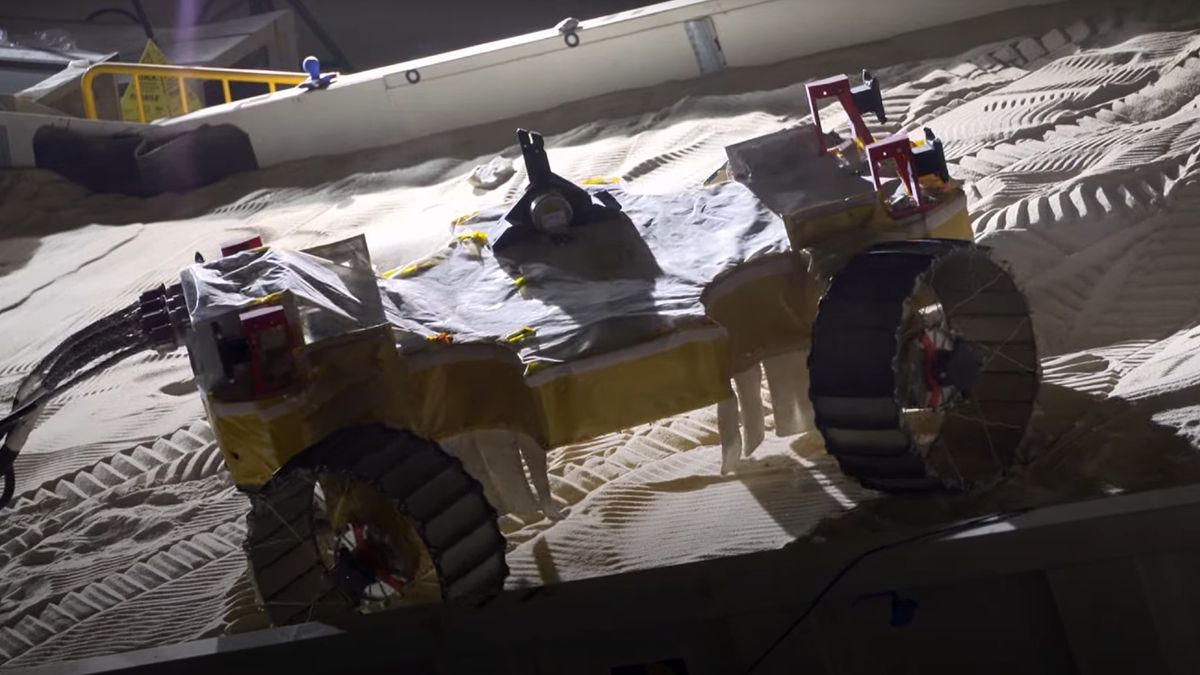NASA’s groundbreaking new moon rover prototype, named VIPER (Volatiles Investigating Polar Exploration Rover), has successfully completed a challenging obstacle course that simulates the rugged terrain of the lunar surface. This significant achievement paves the way for VIPER’s upcoming launch to the lunar south pole in November 2024, aboard a SpaceX Falcon Heavy rocket. To ensure the rover’s exceptional mobility, NASA engineers at the Glenn Research Center in Cleveland meticulously created a simulated lunar environment, complete with large rocks, steep slopes, and deep craters.
VIPER is scheduled to land on Mons Mouton, a prominent mountain located near the moon’s south pole. It will touch down close to the western rim of Nobile crater, where its primary objective will be to characterize the lunar environment and assist in selecting future landing sites for the Artemis program. Throughout its approximately 100-day mission, VIPER will devote itself to this critical task. An intriguing video released by NASA showcases the rover’s recent mobility tests, impressively demonstrating its ability to overcome potential challenges that the lunar surface may present. The tests involved the rover maneuvering over large rocks and traversing quicksand-like soil as it climbed steep slopes and navigated craters.
As part of NASA’s ambitious Artemis program, there are plans to establish a permanent settlement at the moon’s south pole. The VIPER rover will play a pivotal role in identifying areas where crucial resources, such as water, can be harvested to sustain humans during extended stays on the moon. Moreover, the VIPER mission hopes to address fundamental questions surrounding the presence of frozen water and other volatiles on the lunar surface, including their origins, preservation over billions of years, and their ultimate fate after escaping the lunar soil.
In addition to the successful mobility tests, engineers at NASA’s Johnson Space Center in Houston recently tested VIPER’s final science instrument, a drill aptly named TRIDENT (The Regolith Ice Drill for Exploring New Terrain). The drill, provided by Honeybee Robotics in Altadena, California, represents the fourth and final science instrument to arrive at the clean room where VIPER is under construction. A series of meticulous pre-integration inspections were carried out to ensure the drill’s readiness. TRIDENT is a rotary percussive drill, equipped to both spin and hammer to penetrate the lunar ground and retrieve soil samples from up to three feet beneath the surface. Furthermore, this innovative drill will measure the strength, compactness, and temperature of the lunar soil, providing essential data for NASA’s lunar exploration initiatives.
With each successful milestone achieved by VIPER, NASA is one step closer to unlocking the mysteries of the moon and preparing for humanity’s future exploration and habitation of Earth’s celestial neighbor. The VIPER rover represents an extraordinary feat of technological innovation and scientific advancement, promising to revolutionize our understanding of the lunar environment and set the stage for unprecedented discoveries in the years to come.


